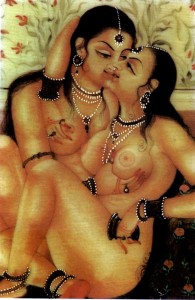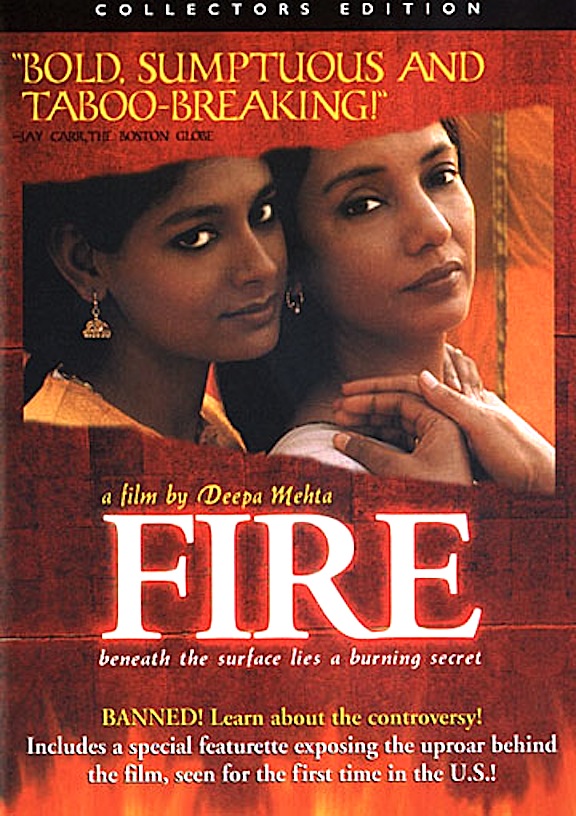THE INDIAN CAPITAL of New Delhi witnessed an event last November that’s becoming increasingly commonplace in India. It was the 5th edition of the Delhi Queer Pride Parade. Thousands of people poured into the streets in support of the native LGBT community, demanding equality and rights for the nation’s sexual minorities. The first such gay pride parade in India took place in 2003. Some other big Indian cities like Mumbai, Kolkata, and Hyderabad, too, have organized their own gay parades.
This development in India over the last couple of decades reflects the increasing willingness of gay people to come out into the open. No official estimates exist about how many of India’s 1.2 billion people are gay or lesbian. The census does not count them, though a category for transgendered “others” was created in 2011. An Indian NGO (non-governmental organization) promoting the rights of LGBT people puts the number at more than seventy million.
However, not all segments of the community have come out to the same extent. For example, male homosexuality has been discussed and debated widely, and gay men have come out in larger numbers, while lesbians have remained largely in the shadows. Indeed these women often suffer unimaginable treatment because of the taboos surrounding the discussion of lesbianism in India. When discussed at all, lesbianism has been bitterly denounced.

This situation is tragically ironic from the standpoint of history, because lesbianism in pre-modern times was not only accepted in India but honored. It is as if a nation has collectively forgotten this aspect of its past. The origins of homophobia in India can be traced back to the Raj period when British colonial officials imposed a ban on homosexual relations. In 1859, two years after crushing the rebellion of 1857, the British started to impose their own anti-sodomy laws on India. The 1860 law, which was still in place until 2009 as Section 377 of the Indian Penal Code, read: “Whoever voluntarily has carnal intercourse against the order of nature with any man, woman or animal, shall be punished with imprisonment for life, or with imprisonment of either description for a term which may extend to ten years, and shall be liable to fine.” For India, it was a great leap backward, as Hindu culture had never before criminalized homosexuality. Over time, most Indians internalized this perspective and came to view homosexuality as an unspeakable crime.
About 150 years after its enactment, on July 2, 2009, the Delhi High Court decriminalized homosexual intercourse between consenting adults throughout India. Section 377 of the Indian Penal Code was struck down as a violation of the fundamental right to life and liberty as guaranteed by the Constitution of India.
Lesbians’ Tragic Fate
Under India’s male-dominated ethos, lesbians have suffered the dual discrimination of their gender and their sexual orientation. Whether at home, at the workplace, or at a doctor’s office, lesbians are frequently seen as being in some way sick or misguided. The result? Lesbians in India have felt the need to remain in darkness, forced to hide their sexual orientation or to live “two lives”—one as a lesbian woman and another as an outwardly tradition-abiding heterosexual woman.
What causes Indian lesbians the most suffering is the relentless pressure from their families to marry. If a woman comes out, or her family finds out that she’s a lesbian, the reactions can range from denial or rejection right up to violent reprisals. There have been reports in the media where women have been raped by their husbands, their brothers, even their fathers in an attempt to “cure” them. Some of them have been locked in a room for days and starved until they stated it was a lie. Women are not only prevented from expressing their sexuality, they are forced to live and have sex with someone against their will.
Some lesbians attempt to escape such forced marriages and to form female-female unions or same-sex marriages, but many such attempts have ended in unimaginable tragedies. Over the last three decades, Indian newspapers have reported same-sex weddings and joint suicides all over the country. Most of the couples were non-English-speaking young women from lower-income groups. Most were Hindus, but there were also a few Sikhs and Christians as well as some interfaith unions.
Young lesbian couples have chosen to die rather than live in a society that refuses to accept them. There were 24 documented cases of lesbian suicide pacts between 1996 and 2004 in the southern state of Kerala alone. In May 2008, there was the particularly appalling case of Christy and Rukmini from Chennai. Both had husbands, and after years of torment from their families they set themselves on fire. Relatives found their charred bodies still hugging each other.
Adding to their woes, the violent intervention of right-wing Hindu organizations has made things worse. In January 2006, a nineteen-year-old girl named Seeta attempted suicide by consuming poison in Meerut in Uttar Pradesh state, because her eighteen-year-old bride Vandana, whom she had married in a Shiva temple, was being locked up in her parents’ home. Members of two right-wing organizations, the Vishwa Hindu Parishad (World Hindu Association) and the Shiv Sena (Army of Shiva) held rallies outside the district magistrate’s office and outside the hospital where Seeta was battling for her life, shouting slogans like, “Stop perverse marriages. Stop anti-social impulses.” Both young women came from poor families and worked in a hosiery factory.
One reason for the high suicide rate may well be the weakness of support structures for lesbians in India. Only a handful of institutions are working for lesbians. Among them, Sangini is probably the only organization in India that works exclusively to support lesbians. Yet, the Government has not allowed it to be registered as a “lesbian support agency.” So it works under the umbrella of a “Women’s Sexual Health Organization.” Sangini runs a helpline and arranges support, including legal assistance and counseling for women wanting to leave home.
Three other lesbian groups are also active: Sakhi Lesbian Resource Centre and Research and Networking Institute in Delhi, Stree Sangama in Bombay, and Sisters in Madras. Another organization, Lesbian Association of India (LAI) operates from outside the country to raise money and provide support networks for lesbians in India. Based in Cambridge, England, LAI has developed a resource network for Indian women to access on the Internet. It also has a blog, Break the Silence, where lesbians can share poetry, stories, and messages. Protected by anonymity, they can express themselves fully there.
But here again, access to a computer is a luxury that most Indian women cannot afford. Consequently, there is also a clear divide between rich and poor lesbians. Women with money and education enjoy more freedom to work and study, and they can leave the house. Poor women, on the other hand, have to get married and work in or near the home.







Discussion1 Comment
It is indeed sad that the previous generations of lesbians has done very little to bring this issue in the forefront. In my experience, there are many well educated lesbians, especially in cities like Mumbai and New Delhi who are comfortable embracing their sexuality. There is also now a match making service for Indian lesbian and Bi women (Wonderful Things Happen) http://www.wonderfulthingshappen.com So we are seeing small changes, but a lot needs to be done to create more awareness about gay women in India.